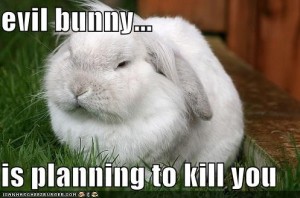Thought I’d share a bit more of my writing process with you as part of my “Writer’s World” blog theme. Since I just turned in the manuscript for Dissonance, the next Blue Notes Series book, and am deep into the planning stages of the last Mermen of Ea Series book, Running with the Wind, what better thing to talk about than the planning stage of a story.
 Everyone plans differently. But I’m convinced that if you want a story with a real beginning, middle, and end, you need to do at least a little bit of planning. Which leads me to the question I’ve been asked a few times in blog interviews: are you a plotter or a pantser?
Everyone plans differently. But I’m convinced that if you want a story with a real beginning, middle, and end, you need to do at least a little bit of planning. Which leads me to the question I’ve been asked a few times in blog interviews: are you a plotter or a pantser?
A plotter is someone who plots out their entire story before writing a word of it. Some plotters even outline complete scenes and chapters. A pantser is someone who writes by the seat of their pants (yeah, love that one!). I’m a hybrid. I almost always have a broad scope outline of the story I’m about to write. Then I pants it from there, working my way through chapters without a detailed outline of what the chapter will be about. I’ll talk about that in another blog post – how I pants once I’ve got the “bones” of a story.
So how do I create the bones (prepare to write, really)? I’ll use The Melody Thief as an example, since  it’s a standalone book not dependent upon any other plots (as opposed to my mermen books, the three of which are really one longer story). Keep in mind that The Melody Thief is more character than plot driven (something I’ll talk about in a later post), so this is my approach for those sorts of stories.
it’s a standalone book not dependent upon any other plots (as opposed to my mermen books, the three of which are really one longer story). Keep in mind that The Melody Thief is more character than plot driven (something I’ll talk about in a later post), so this is my approach for those sorts of stories.
Step One: Imagine the characters. Easy enough to say, for example, that Cary Redding (the focus of Thief), is a cellist. Okay, but that’s only a little interesting. What’s more interesting? Figuring Cary out. What drives Cary? Who is he? Who will he be paired with to make the story interesting (i.e. create tension between the MCs)? Then I do the same thing with the second MS, in this case, Antonio.
Step Two: Figure out the primary conflict or, in the case of a character driven story, what the main character(s) path of growth will be. This is tricky. I’m not a fan of static characters who never change, but it’s hard to pull off a story where both characters change by leaps and bounds (at least in a single book). So I usually focus on one in particular to do the most changing. For The Melody Thief, that was easy. Cary would be the focus. He’s the most messed up and in need of saving. He is the “melody thief.” By the way, this step usually determines what point of view I write in (a topic for another day).
Step Three: Figure out where the character’s growth starts and where I want him to end up. How do I take him from Point A to Point B in his personal journey? In the case of Cary, he starts out a mess because of his crappy childhood and insecurities. He feels undeserving of the accolades he receives from his music, but he loves to play. Lots of internal conflict here. How does that manifest? In the form of an addiction to anonymous sex and fear of commitment (because who would want to commit to him, as undeserving as he is?). Where I want him to end up? I know I want him to have a HEA and end up in a long-term relationship. I’m not exactly sure at this point what that looks like. This is where the pantsing part comes in much later, when I’m writing.
Step Four: Create the plot to hang the growth on (plot bunnies!) . In this case, Antonio as rescuer (literally, when Cary is mugged and Antonio saves his life), forces the two MCs together. Then give the two MCs some real life challenges they have to face together so that they are forced to grow. Without spoiling too much, suffice it to say that Cary’s past and Antonio’s son, Massimo, become those challenges.
. In this case, Antonio as rescuer (literally, when Cary is mugged and Antonio saves his life), forces the two MCs together. Then give the two MCs some real life challenges they have to face together so that they are forced to grow. Without spoiling too much, suffice it to say that Cary’s past and Antonio’s son, Massimo, become those challenges.
Step Five: Create touchpoints. Plot points, really, that I know I want to hit. Cary lying to Antonio about who he is and the shit hits the fan moment when the truth comes out, for example. Cary having to choose between a life with Antonio and a life he’d always dreamed of as a kid. Antonio having to face his own demons when he realizes he may lose custody of his son. Last, but hardly least, the final scene that wraps things up. Yes, I always know what the ending will be, even if all the details aren’t clear.
That’s it. The birth of a story. Messy? Yep. Is this everyone’s process? Nope. But it works for me with these character driven stories. More to come on some of the topics I’ve hit upon in this post. I hope you enjoyed it!
I’d love to hear your thoughts about the process. Feel free to ask questions! -Shira


4 comments